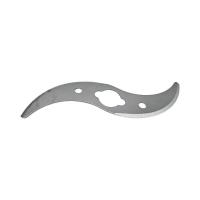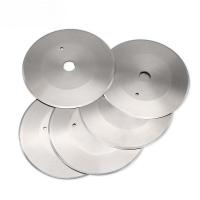| Sign In | Join Free | My himfr.com |
|
| Sign In | Join Free | My himfr.com |
|
| Ask Lasest Price | |
| Brand Name : | Seton |
| Model Number : | Tungsten Carbide |
| Certification : | CE ISO |
| Price : | Can be discussed |
| Payment Terms : | L/C, D/A, D/P, T/T, Western Union, MoneyGram |
| Supply Ability : | 500 Piece/Pieces per Day |
| Delivery Time : | 30days |
Description:
Here are the key points regarding the use of stainless steel blades in the food processing industry:
1,Corrosion Protection
2,Hardness and Edge Retention
3,Hygiene and Food Safety
4,Ergonomics and Operational Safety
5,Durability and Maintenance
Food Processing Blade Specifications:
| Product Name | Circular Cutting Knives For Food Processing Plastic Rubber |
| Material | Tungsten Carbide |
| Hardness | HRC 56-75 |
| Size | 100x15x0.3mm |
| Thickness range | 0.1mm-2mm |
| Precision | ±0.02mm |
| Grade | Food |
| Application | Food Processing Industry |
Here are the key points regarding the blade shape and size requirements for food processing applications:
1,Blade Shapes
2,Blade Size
3,Specialized Blade Designs
4,Interchangeable Blade Systems
5,Regulatory Compliance
Picture:

Size:

Applications:

Food Processing Blades Package:


|




